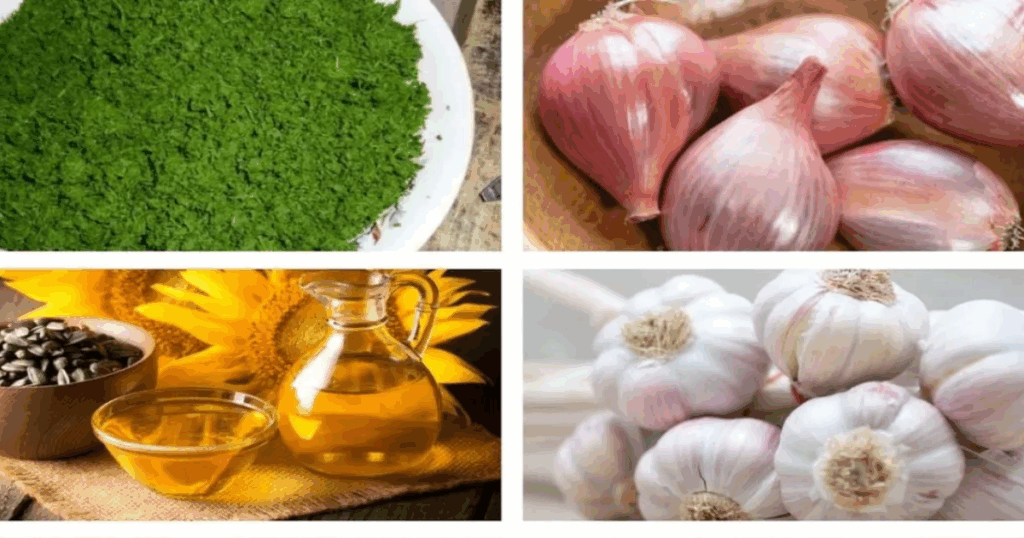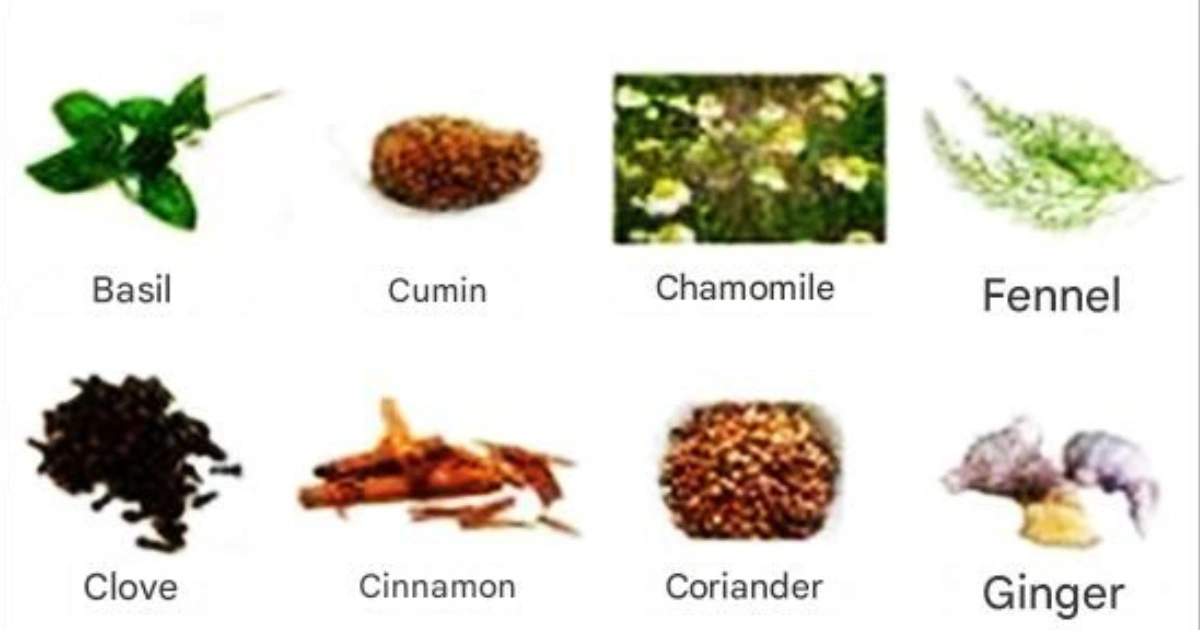Introduction
In our modern world, we often turn to pharmacies for relief from ailments, relying on medications that have been developed through scientific research and innovation. However, many of these medications have their roots in nature, inspired by plants that have been used for centuries in traditional medicine. This article delves into the fascinating connections between common pharmaceutical drugs and the natural ingredients that inspired them, highlighting the profound impact of nature on modern medicine.
🌼 Ibuprofen and White Clover: A Natural Pain Reliever
Ibuprofen is a widely used nonsteroidal anti-inflammatory drug (NSAID) known for its effectiveness in reducing pain, inflammation, and fever. While ibuprofen itself is synthetically produced, its origins trace back to natural compounds found in plants like white clover. White clover has been traditionally used for its anti-inflammatory properties, and compounds derived from such plants have paved the way for the development of synthetic pain relievers like ibuprofen.
Key Points:
- Ibuprofen: Synthetic NSAID for pain and inflammation.
- White Clover: Traditional use in herbal medicine for anti-inflammatory effects.
- Connection: Plant-derived compounds inspired the development of ibuprofen.
🌼 Paracetamol and Chamomile: Soothing Pain Relief
Paracetamol (also known as acetaminophen) is a common analgesic and antipyretic used to alleviate mild to moderate pain and reduce fever. Its development was influenced by natural remedies, including chamomile, a plant renowned for its calming and pain-relieving properties. Chamomile has been utilized in various cultures to treat ailments such as headaches and digestive discomfort, showcasing the long-standing relationship between plants and pain management.
Key Points:
- Paracetamol: Widely used for pain and fever relief.
- Chamomile: Herbal remedy with calming and analgesic effects.
- Connection: Traditional use of chamomile informed the development of paracetamol.
🌿 Omeprazole and Turmeric: Digestive Health Allies
Omeprazole is a proton pump inhibitor prescribed to treat conditions like acid reflux and ulcers by reducing stomach acid production. While omeprazole is a synthetic drug, its development was influenced by natural substances such as turmeric, a spice containing curcumin known for its anti-inflammatory and digestive health benefits. Turmeric has been used in traditional medicine systems like Ayurveda to treat digestive disorders, highlighting the role of natural ingredients in modern pharmacology.
Key Points:
- Omeprazole: Synthetic drug for reducing stomach acid.
- Turmeric: Traditional use in digestive health.
- Connection: Natural compounds inspired the development of omeprazole.

🧄 Metformin and Garlic: Managing Blood Sugar Naturally
Metformin is a first-line medication for managing type 2 diabetes, helping to control blood sugar levels. The development of metformin was influenced by natural remedies, including garlic, which has been studied for its potential to lower blood sugar levels. Garlic has been used in various cultures for its medicinal properties, including its effects on metabolism and cardiovascular health.
Key Points:
- Metformin: Medication for managing type 2 diabetes.
- Garlic: Natural remedy with potential blood sugar-lowering effects.
- Connection: Traditional use of garlic informed the development of metformin.
🌵 Amoxicillin and Aloe Vera: Healing Properties from Nature
Amoxicillin is a widely prescribed antibiotic used to treat bacterial infections. While amoxicillin is a synthetic antibiotic, its development was influenced by natural substances like aloe vera, a plant known for its healing properties. Aloe vera has been used for centuries to treat wounds and infections, and its compounds have inspired the development of antimicrobial agents like amoxicillin.
Key Points:
- Amoxicillin: Synthetic antibiotic for bacterial infections.
- Aloe Vera: Traditional use in wound healing and infection treatment.
- Connection: Plant-derived compounds inspired the development of amoxicillin.
🌿 Aspirin and Cloves: Pain Relief from Nature
Aspirin (acetylsalicylic acid) is one of the most commonly used medications for pain relief, reducing inflammation, and preventing blood clots. Its origins trace back to salicylic acid, a compound found in plants like willow bark. Cloves, another plant, contain eugenol, a compound with analgesic and anti-inflammatory properties. The study of these natural substances led to the synthesis of aspirin, showcasing the profound impact of nature on pharmaceutical development.
Key Points:
- Aspirin: Synthetic drug for pain relief and inflammation.
- Cloves: Natural source of eugenol with analgesic properties.
- Connection: Plant compounds inspired the development of aspirin.
🌱 Conclusion
The journey from plant to pill illustrates the profound influence of nature on modern medicine. Many of the medications we rely on today have their origins in natural substances, highlighting the importance of traditional knowledge and the potential of plants in therapeutic applications. As we continue to explore and understand the medicinal properties of plants, we open doors to new treatments and a deeper appreciation for the natural world.
🛠️ Tools and Materials Checklist
- Herbal Reference Books: To explore the medicinal properties of plants.
- Gardening Supplies: For cultivating medicinal plants at home.
- Essential Oils: Derived from plants for therapeutic use.
- Herbal Supplements: For supporting health and wellness.
❓ Frequently Asked Questions (FAQs)
Q: Are natural remedies safer than synthetic medications?
A: Natural remedies can be effective, but they may also have side effects or interact with other medications. It’s important to consult with a healthcare professional before using them.
Q: Can I replace my prescribed medication with a natural remedy?
A: Always consult with your healthcare provider before making any changes to your prescribed treatment plan.
Q: Where can I learn more about the medicinal properties of plants?
A: Consider visiting reputable websites, reading herbal medicine books, or consulting with a trained herbalist for more information.
📢 Conclusion
Understanding the connections between natural ingredients and pharmaceutical drugs enriches our appreciation for both traditional and modern medicine. By exploring these relationships, we can make informed decisions about our health and wellness.


buy generic amoxicillin for sale – https://combamoxi.com/ amoxicillin uk
diflucan pills – https://gpdifluca.com/# order forcan generic
buy cenforce medication – https://cenforcers.com/ order cenforce 100mg online
does cialis raise blood pressure – buy cialis in las vegas where to buy generic cialis ?
cialis free trial 2018 – https://strongtadafl.com/# canadian no prescription pharmacy cialis Este enlace se abrirГЎ en una ventana nueva
zantac medication – order zantac 300mg generic ranitidine 150mg uk
order viagra with paypal – cheap viagra 100 canada cheap viagra in london
I couldn’t resist commenting. Adequately written! https://buyfastonl.com/
With thanks. Loads of expertise! https://ursxdol.com/cenforce-100-200-mg-ed/
Greetings! Very serviceable recommendation within this article! It’s the crumb changes which wish make the largest changes. Thanks a lot towards sharing! https://prohnrg.com/product/lisinopril-5-mg/
Palatable blog you have here.. It’s severely to assign great calibre script like yours these days. I justifiably respect individuals like you! Rent mindfulness!! https://aranitidine.com/fr/levitra_francaise/
With thanks. Loads of knowledge! https://ondactone.com/simvastatin/
More posts like this would prosper the blogosphere more useful.
https://proisotrepl.com/product/propranolol/
Greetings! Extremely gainful par‘nesis within this article! It’s the scarcely changes which choice make the largest changes. Thanks a quantity for sharing! http://bbs.dubu.cn/home.php?mod=space&uid=395576
order forxiga online – order dapagliflozin 10 mg online cheap buy dapagliflozin 10mg online
orlistat price – https://asacostat.com/# order xenical 60mg pill
I’ll certainly carry back to skim more. http://seafishzone.com/home.php?mod=space&uid=2331528
You can conserve yourself and your ancestors by being alert when buying pharmaceutical online. Some pharmacy websites control legally and sell convenience, privacy, sell for savings and safeguards to purchasing medicines. buy in TerbinaPharmacy https://terbinafines.com/product/motrin.html motrin
This website positively has all of the tidings and facts I needed to this participant and didn’t comprehend who to ask. TerbinaPharmacy
With thanks. Loads of conception!
https://t.me/dragon_money_mani/25